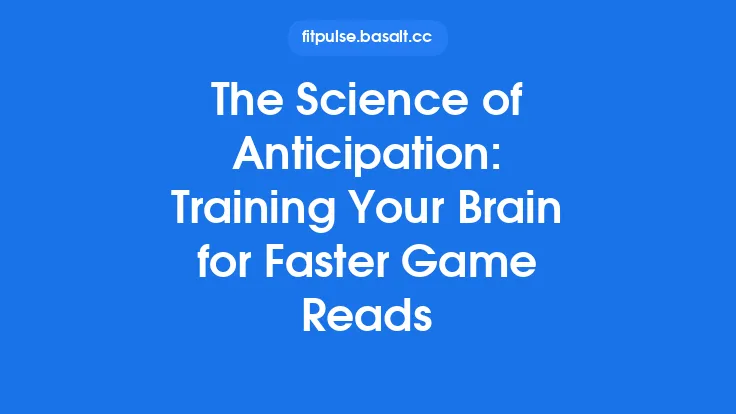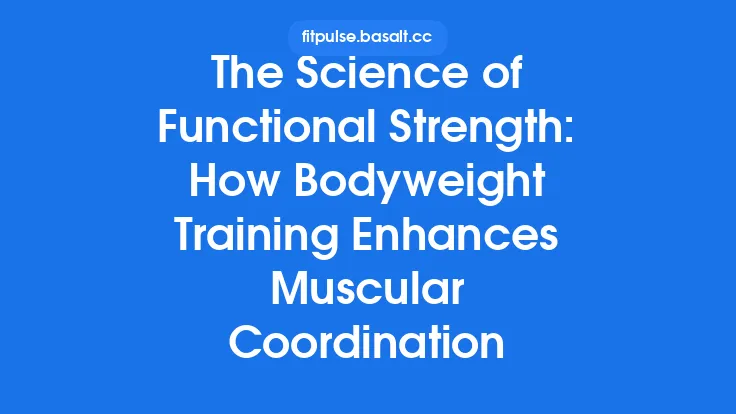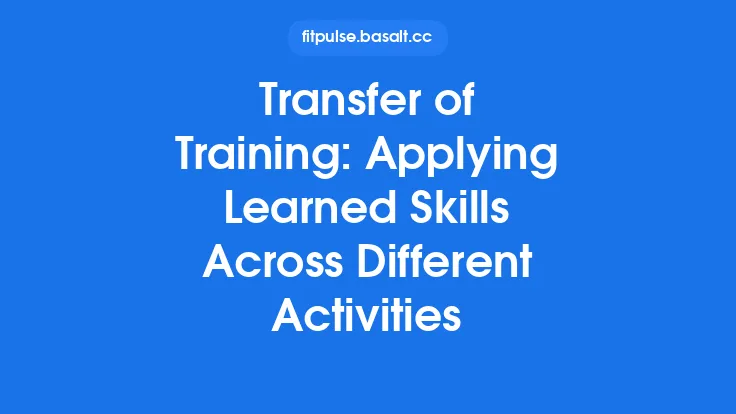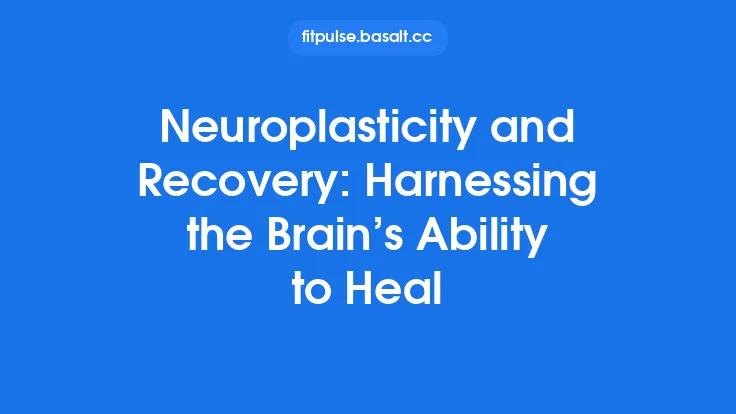Motor learning is the process by which the nervous system acquires, refines, and retains the ability to produce coordinated movements. In the context of exercise science, understanding how the brain transforms a novel movement into a reliable, efficient pattern is essential for designing training protocols that promote lasting skill acquisition. This article explores the core mechanisms that underlie motor learning, from the cellular level to whole‑body behavior, and highlights how practitioners can apply this knowledge to enhance performance across a wide range of physical activities.
Defining Motor Learning
Motor learning is distinct from simple performance improvement. While a single bout of practice can temporarily boost output, motor learning refers to relatively permanent changes in the capability to execute a movement, even after a period of no practice. These changes are reflected in three key attributes:
- Stability – the movement can be reproduced with minimal variability under similar conditions.
- Adaptability – the movement can be modified when environmental constraints shift (e.g., a change in surface friction).
- Retention – the skill persists over time, allowing the performer to retrieve the movement after days, weeks, or months of inactivity.
The definition emphasizes that learning is a change in the underlying neural representation, not merely a transient performance gain.
Neural Substrates of Skill Acquisition
Multiple brain regions cooperate to encode and execute new motor patterns. The primary structures include:
- Primary Motor Cortex (M1): Generates the descending corticospinal commands that drive muscle activation. Early in learning, M1 activity is diffuse; with practice, the representation becomes more focal, reflecting a refined motor map.
- Premotor and Supplementary Motor Areas (PMA & SMA): Involved in sequencing and planning complex actions, especially when the movement requires coordination of multiple joints.
- Basal Ganglia: Provide a gating function that selects appropriate motor programs and suppresses competing actions. Dopaminergic signaling within the striatum is crucial for reinforcing successful movement outcomes.
- Cerebellum: Acts as a comparator, detecting mismatches between intended and actual movement outcomes (prediction errors) and issuing corrective signals to adjust ongoing motor commands.
- Parietal Cortex: Integrates proprioceptive and visual information to maintain an internal representation of limb position relative to the environment.
These regions form a distributed network that continuously updates motor commands based on sensory feedback and internal predictions.
Internal Models and Motor Planning
A central concept in motor learning is the formation of internal models—neural representations that predict the consequences of motor commands (forward models) and determine the necessary commands to achieve a desired outcome (inverse models).
- Forward Models: Estimate the sensory consequences of a motor command before the movement is executed. By comparing the predicted feedback with the actual sensory input, the system can generate rapid error signals that guide online corrections.
- Inverse Models: Compute the motor command required to produce a specific sensory outcome. Learning an inverse model involves mapping desired movement goals (e.g., “lift the bar to chest height”) onto the appropriate pattern of muscle activations.
During early practice, the brain relies heavily on forward models to detect errors. As proficiency increases, inverse models become more accurate, allowing the movement to be launched with minimal online correction.
Error Detection and Correction Mechanisms
Error processing is the engine of motor learning. Two principal error signals drive adaptation:
- Sensory Prediction Error (SPE): The discrepancy between the expected sensory feedback (from the forward model) and the actual feedback received. SPEs are primarily processed by the cerebellum and lead to rapid, trial‑by‑trial adjustments.
- Reward Prediction Error (RPE): The difference between expected and actual outcomes in terms of success or failure (e.g., achieving a target weight or completing a rep). RPEs engage basal ganglia circuits and reinforce motor commands that lead to positive outcomes.
Both error types are encoded at the synaptic level, resulting in modifications of the strength of connections within the motor network. Over repeated trials, these adjustments consolidate into stable motor programs.
Types of Motor Learning: Explicit vs. Implicit
Motor learning can proceed through two complementary pathways:
- Explicit Learning: Involves conscious awareness of the movement’s components, often guided by verbal instructions or visual cues. This route relies heavily on declarative memory systems (hippocampus, prefrontal cortex) and is useful for teaching novel techniques that require precise timing or sequencing.
- Implicit Learning: Occurs without conscious awareness of the underlying rules. Repeated exposure to the movement leads to automaticity, driven by procedural memory circuits (basal ganglia, cerebellum). Implicit learning is robust to stress and multitasking, making it valuable for performance under competition conditions.
Effective skill acquisition typically blends both pathways: explicit instruction introduces the movement, while extensive practice allows the brain to internalize it implicitly.
Role of Sensory Integration
Accurate motor output depends on the seamless integration of multiple sensory modalities:
- Proprioception: Provides information about joint angles, muscle length, and tension. Muscle spindles and Golgi tendon organs generate afferent signals that inform the central nervous system about limb position and force.
- Vision: Supplies external reference frames, crucial for tasks that require spatial accuracy (e.g., targeting a ball or aligning a barbell).
- Vestibular Input: Contributes to balance and orientation, especially in dynamic or unstable environments.
The brain continuously weights these inputs based on reliability. For instance, when visual information is degraded (e.g., low lighting), proprioceptive cues become more dominant. Understanding this weighting process helps practitioners manipulate training environments to challenge specific sensory channels and promote more adaptable motor representations.
Consolidation and Retention Processes
After a training session, the newly formed motor memory undergoes consolidation, a time‑dependent process that stabilizes the skill. Key features include:
- Offline Processing: Neural replay of movement patterns occurs during periods of rest, particularly during slow‑wave sleep. This replay strengthens the synaptic changes initiated during practice.
- Systems Consolidation: Over days to weeks, the memory trace can shift from reliance on cortical motor areas to more distributed networks, enhancing resilience to interference.
- Interference Management: Introducing a different motor task shortly after practice can disrupt consolidation. Scheduling training sessions to allow sufficient separation between distinct skills can protect the integrity of each memory trace.
Retention is assessed by measuring performance after a delay. A well‑consolidated skill will show minimal decay and rapid reacquisition when practice resumes.
Assessing Motor Learning in Exercise Settings
Quantifying learning progress requires objective metrics that capture both performance and underlying neural adaptation. Common assessment tools include:
- Kinematic Analysis: Motion capture systems provide detailed data on joint angles, velocities, and movement smoothness. Metrics such as peak angular velocity, trajectory deviation, and jerk (rate of change of acceleration) are sensitive to learning.
- Electromyography (EMG): Records muscle activation patterns, revealing changes in timing and coordination. A shift from co‑contraction to more selective activation often signals skill refinement.
- Force Plate Measures: Assess balance and postural control, useful for tasks that demand stability (e.g., squat depth control).
- Neurophysiological Techniques: Transcranial magnetic stimulation (TMS) can probe corticospinal excitability, offering insight into cortical reorganization associated with learning.
Combining these methods provides a comprehensive picture of how a learner’s motor system evolves over time.
Practical Implications for Exercise Professionals
Understanding the fundamentals of motor learning equips coaches, therapists, and fitness specialists with evidence‑based strategies to facilitate skill acquisition:
- Structure Practice Sessions: Begin with clear, concise instructions (explicit component) followed by high‑density repetitions that allow the nervous system to refine internal models (implicit component).
- Manipulate Sensory Contexts: Occasionally alter visual or proprioceptive conditions (e.g., using occlusion goggles or unstable surfaces) to encourage the brain to develop flexible sensory weighting.
- Schedule Rest Intervals: Incorporate brief periods of inactivity within a session to permit short‑term offline processing, and ensure adequate sleep between training days to support long‑term consolidation.
- Monitor Error Signals: Use objective performance data to identify systematic errors. Adjust task difficulty to keep error magnitude within a range that promotes learning without causing frustration.
- Progressive Load Management: Gradually increase resistance or speed once the learner demonstrates stable kinematic patterns, ensuring that the motor program can accommodate higher demands without destabilizing.
By aligning training design with the brain’s natural learning mechanisms, practitioners can accelerate skill mastery while minimizing the risk of maladaptive patterns.
Future Directions in Motor Learning Research
The field continues to evolve, with several emerging avenues poised to deepen our understanding of how the brain acquires movement skills:
- Computational Modeling: Advanced algorithms simulate forward and inverse model dynamics, offering predictive tools for optimizing training parameters.
- Neuroimaging Integration: Real‑time functional MRI and magnetoencephalography (MEG) are being used to visualize the temporal evolution of motor networks during skill acquisition.
- Wearable Sensor Analytics: Machine‑learning pipelines applied to inertial measurement units (IMUs) can detect subtle changes in movement quality, providing immediate feedback for adaptive training.
- Genetic and Molecular Insights: Investigations into individual variability in learning rates are uncovering genetic markers that influence synaptic efficacy and neurotransmitter regulation.
- Cross‑Domain Transfer: While distinct from the “transfer of training” literature, new studies are exploring how motor learning in one modality (e.g., cycling) can inform neural adaptations that benefit unrelated activities through shared neural substrates.
These developments promise to refine the precision with which exercise professionals can tailor interventions to the unique learning profile of each individual.
In sum, motor learning is a multifaceted process rooted in the brain’s capacity to predict, correct, and consolidate movement. By appreciating the underlying neural architecture, error‑driven adaptation, and the interplay of sensory information, practitioners can design training environments that align with the brain’s natural learning pathways, fostering durable and adaptable skill acquisition across the spectrum of exercise and sport.





